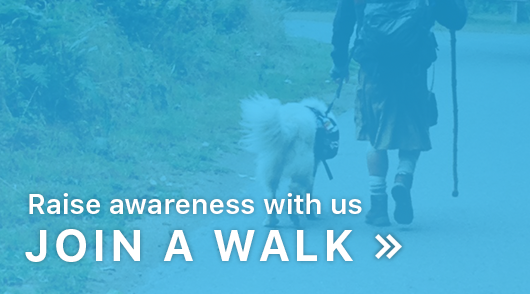
Many of us have experienced the anguish of watching our dogs suffer because they are sensitive to noises (especially fireworks, thunderstorms, vacuum cleaners, celebrations, etc.), and we naturally look for something to calm our canine friends and make their lives during these occasional times less stressful. But we have to be careful what we give them to alleviate their stress. The article below, by Dr. Karen Becker, discusses a recent FDA warning about a noise aversion drug called Sileo, and offers some alternatives to help our dogs cope with their noise aversions. We also would like to recommend you check out iCalm Pet, “specially designed, clinically tested music that improves your pet’s quality of life.”
October 23, 2017
By Dr. Becker
If you have a dog at home who’s sensitive to noise, it’s important to know there are a number of safe, all-natural things you can do to help alleviate your pet’s fear and make him feel more comfortable. I’ll talk more about those shortly.
One thing I almost never recommend is medicating an anxious or fearful dog, and a recent FDA warning about a noise aversion drug called Sileo is one of the many reasons I try to avoid pharmaceuticals whenever possible, especially for problems that can be successfully treated with natural therapies.
Is This Sedative Really Appropriate for Home Use or Noise Phobia?
The FDA warning alerted dog owners and veterinarians to the risk of accidental overdose of Sileo, which is a gel given orally to treat noise aversion in dogs. The gel is absorbed into the bloodstream through the gums.
While Sileo was recently FDA-approved for use in dogs with noise phobia, the active ingredient in the drug, dexmedetomidine, has been around for years. It’s used in veterinary medicine as a sedative. When administered in a veterinary setting with competent staff standing by, it’s generally safe.
However, as Dr. Eric Barchas notes in an article for Dogster, a small percentage of animals don’t handle it well, even in very small doses, and in those cases, it can cause life-threatening complications.1 Another very interesting observation Barchas made in his article is that in his experience, dogs injected with dexmedetomidine actually become sensitized to noise. “Noises seem to disrupt the sedative effects,” he writes. “Yet it’s approved for noise phobias.”
28 Reported Overdoses in 1 Year
During its first year of use, the FDA received 28 reports of Sileo overdoses in dogs. It’s suspected the dosing problem has to do with the drug’s delivery mechanism. From the FDA’s warning:
“Sileo is packaged in an oral dosing syringe with a ring-stop mechanism on the plunger that must be ‘dialed’ and locked into place in order to set the correct dose for the dog. Overdose can result if the ring-stop is not fully locked. Therefore, it is very important that the person administering the product understands how to operate the syringe correctly before giving the product to the dog.”2
In some of the 28 cases, the entire syringe full of gel was given. In about half the cases, the dogs showed symptoms of overdose, including “… lethargy, sedation, sleepiness, slow heart rate, loss of consciousness, shallow or slow breathing, trouble breathing, impaired balance or incoordination, low blood pressure, and muscle tremors.” Fortunately, the symptoms were temporary.
In my opinion, this drug, like many drugs, carries more risks than benefits in treating a condition for which there are so many safe, alternative therapies. Jumping to the use of drugs before exhausting all behavioral modification techniques and natural approaches is something I never recommend, but is a standard approach for many veterinarians.
Definition of Canine Noise Phobia
Common triggers for a dog’s noise phobia include fireworks, thunder, construction work, traffic or street noise, celebrations, vacuum cleaners and smoke detectors. If you suspect your dog has or is developing a noise aversion, it’s important to first understand the difference between the normal fear a dog expresses and fear that has become pathologic. Veterinarian Dr. Karen Overall, a board-certified animal behaviorist, explains the latter condition this way:
“Noise phobia, of which storm phobias constitute one class, is defined as a sudden and profound, nongraded, extreme response to noise, manifested as intense, active avoidance; escape; or anxiety behaviors associated with the activities of the sympathetic branch of the autonomic nervous system.
Behaviors can include catatonia or mania concomitant with decreased sensitivity or responsiveness to pain or social stimuli. Once fully developed, repeated exposure results in an invariant pattern of response.”3
Some dogs react to noise phobias by freezing and withdrawing, while others respond by crashing through windows or chewing through restraints or enclosures. While the former behavior may seem less extreme, the fact is both reactions indicate profound suffering and damage to nerve cells.
Research shows early spaying/neutering may increase the incidence of phobias in certain breeds.4 I believe damage from repeated and unnecessary vaccinations can also greatly exacerbate noise phobias in animals. Working with a holistic practitioner to help combat the effects of over-vaccination is the only path towards improvement if the root cause of the phobia is vaccine induced.
Why It’s so Important to Take Action to Help Your Dog
Needless to say, a noise phobia in your canine family member is no laughing matter. Left untreated, the condition will invariably get worse. The development of a phobia involves a complex molecular change that isn’t well understood, but seems to involve a shift in how an affected dog processes information.
Noise phobia can be inherited, so it’s possible for a pup to be predisposed to the condition if dogs in his lineage have displayed overreaction to noise. In fact, the genetic connection is so direct that if one of your dog’s parents overreacted to storms or other noises, you can reasonably expect your pet will have a similar response. An overreaction to loud noises can also predispose yourdog to other panic disorders like separation anxiety and behavioral problems.
Learn What Calms Your Dog
I recommend as a first step in dealing with your dog’s noise aversion that you simply observe her during a fearful episode and see what you can do to calm her. Some suggestions:
If your dog is crate trained, she may go there voluntarily to self-soothe, or you can lead the way. A blanket draped over the crate may help her relax. However, if she doesn’t normally use a crate, or worse, has a fear of crates due to a past bad experience, this isn’t the time to use one.
Under no circumstances should a fearful pup be forced into a crate either when she’s already anxious, or in anticipation of a panic response to weather or other noises. Your dog will feel trapped, which will make both her phobia and her reaction to it worse.
Alternatively, you can lead her to a quiet room in your home and either leave her alone there to self-soothe (as long as she’s not frantic), or stay quietly with her. A silent, still environment can often provide relief.
Some dogs will seek out dark, quiet corners on their own where they can calm themselves, so consider providing yours with a darkened room, a closet floor or space under a table or desk. The goal is to give her a secure spot that helps her calm herself. If she continues to panic in her quiet space, it isn’t what she needs to help her relax. Put an earthing mat or grounding pad in your dog’s safe space. This can be especially helpful during stormy weather.
Take your dog for a brisk walk or a game of fetch before and after a stressor occurs to help combat the negative physiologic effects of stress-induced hormones.
Play calm, soothing music (e.g., MusicMyPet.com) before a possible stressor occurs. This may both relax your dog and drown out distressing noises.
Try putting gentle, continuous pressure on your dog to calm her. If she’ll allow it, try leaning gently on or against her without petting or stroking. If this is helping, you’ll feel her muscles begin to relax. If instead she seems to grow more anxious, this isn’t a technique that will be helpful for her.
If your dog seems to respond well to pressure applied to her body, there are wraps available (e.g., Thundershirt.com, TTouch anxiety wrap) that many pet parents find very helpful.
Try TTouch, a specific massage technique that can help anxious pets.
Eye shades that either block all light or diffuse the light can help some dogs relax during thunderstorms. You can try a basic eye mask intended for humans or a pair of tinted Doggles. You can also try blocking the intensity of the sounds your pet hears. Ear protection for dogs is available from Mutt Muffs.
Consult your holistic veterinarian about homeopathic, TCM (Traditional Chinese Medicine) and Bach Flower Remedies that could be helpful in alleviating your dog’s stress. Rescue Remedy is one of many different flower essences that can help calm a tense animal.
Calming nutraceuticals and herbs that can be of benefit include holy basil, l-theanine, rhodiola, ashwagandha, GABA, 5-HTP and chamomile. If the stressor persists longer than 72 hours, adding in adrenal supportive glandulars (such as Standard Process Drenamin) can be very beneficial. Consult your holistic vet about which option is right for your pet
Place a few drops of the essential oil of lavender on a cloth by your dog’s favorite hiding place before a stressor occurs, if possible, or diffuse the oil around your house for an overall calming effect. Also consider an Adaptil collar or diffuser, which contains a dog-appeasing pheromone and is designed to have a calming effect. Using zoopharmacognosy in these situations can be profoundly impactful.
One thing you never, ever want to do with a dog who’s afraid of storms or other loud noises, is leave her outdoors while she’s anxious or panicked. Dogs regularly run away or seriously injure themselves attempting to escape outdoor enclosures during storms, fireworks displays and other noisy events.
Behavior Modification
In addition to learning what calms your dog, it’s also critical to work to extinguish the overreaction. Behavior modification techniques such as desensitization, counter-conditioning or a combination are most often used to help anxiety-related canine conditions.
Desensitization involves exposing your dog to the noises he overreacts to. There are tapes, records, CDs and Internet sites that mimic all sorts of noises, including storms, exploding fireworks, car backfires and even gunshots. This approach works better with dogs in the beginning stages of a phobia, and not so well with dogs suffering from fully entrenched phobias.
Counter-conditioning involves rewarding your dog for not reacting, typically with a food treat that competes with his ability to react to a noise stimulus. If you feel you need help modifying your pet’s fear-based behavior, I recommend consulting an animal behaviorist in your area through the American College of Veterinary Behaviorists.
Sources:
1 Dogster, July 12, 2016
2 FDA Animal Drug Safety Communication, May 23, 2017
3 dvm360, December 1, 2010
4 Journal of the American Veterinary Medical Association, February 1, 2014, Vol. 244, No. 3, Pages 309-319
Disclaimer
The Puppy Up Foundation does not endorse nor recommend any particular product, service, or treatment. We offer information strictly for educational and/or informational purposes. We believe it is the pet owner’s responsibility to do the research and draw his or her own conclusions.








